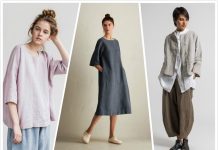Your appearance is not only a reflection of your personal style, but also a way of communicating your professionalism and credibility. Whether you are meeting a client, attending a conference, or giving a presentation, your appearance can influence how others perceive you and your message. In this article, we will share some tips on how you can use your appearance to convey professionalism in different contexts and situations.
Dress for the occasion
One of the first steps to use your appearance to convey professionalism is to dress appropriately for the occasion. Depending on the industry, the culture, and the expectations of your audience, you may need to adjust your attire to suit the level of formality and the purpose of the event. For example, if you are meeting a conservative client, you may want to wear a suit or a dress that covers your shoulders and knees. If you are attending a creative workshop, you may opt for a more casual and colorful outfit that shows your personality. The key is to research the norms and preferences of your audience and match your style to theirs.
Choose the right colors
Another way to use your appearance to convey professionalism is to choose the right colors for your clothing and accessories. Colors can have different meanings and associations, and they can also affect your mood and energy. For example, blue is often seen as a color of trust, calmness, and confidence, while red is associated with power, passion, and action. You can use colors to enhance your message and create a positive impression on your audience. For example, if you want to appear authoritative and assertive, you can wear a red tie or a scarf. If you want to appear friendly and approachable, you can wear a light blue shirt or a blouse.
Pay attention to the details
A third way to use your appearance to convey professionalism is to pay attention to the details of your outfit and grooming. The details can make or break your overall impression, and they can also show your attention to quality and care. For example, you can make sure that your clothes are clean, ironed, and fit well, that your shoes are polished and comfortable, and that your accessories are coordinated and not too flashy. You can also take care of your hygiene, hair, and makeup, and avoid anything that might distract or offend your audience. For example, you can avoid wearing strong perfume or cologne, chewing gum, or having visible tattoos or piercings.
Consider your body language
A fourth way to use your appearance to convey professionalism is to consider your body language and how it complements or contradicts your verbal communication. Your body language can express your emotions, attitudes, and intentions, and it can also affect how others respond to you. For example, you can use your posture, eye contact, facial expressions, gestures, and voice to show confidence, interest, respect, and enthusiasm. You can also avoid body language that might signal nervousness, boredom, arrogance, or hostility. For example, you can avoid fidgeting, crossing your arms, rolling your eyes, or interrupting others.
Adapt to the situation
A fifth way to use your appearance to convey professionalism is to adapt to the situation and the feedback you receive from your audience. Your appearance is not a static or fixed element, but a dynamic and flexible one that can change according to the context and the goals. For example, you can modify your appearance to suit different cultures, climates, or occasions, and you can also adjust your appearance to match the mood, tone, or expectations of your audience. You can also observe how others react to your appearance and use that information to improve or modify your communication. For example, if you notice that your audience is bored, confused, or intimidated by your appearance, you can change your clothing, accessories, or body language to make them more engaged, clear, or comfortable.
Experiment and learn
A sixth way to use your appearance to convey professionalism is to experiment and learn from your experiences and feedback. Your appearance is not a one-size-fits-all solution, but a personal and creative expression that can evolve and improve over time. You can try different styles, colors, and combinations, and see what works best for you and your audience. You can also ask for feedback from your colleagues, friends, or mentors, and use their suggestions to refine your appearance. The most important thing is to be authentic and comfortable with your appearance, and to use it as a tool to enhance your communication and professionalism.






























